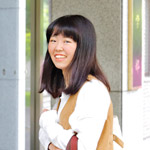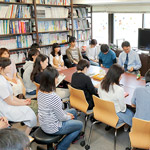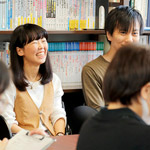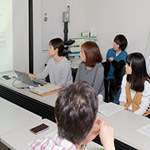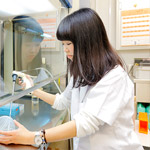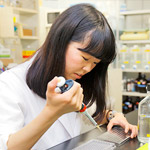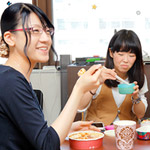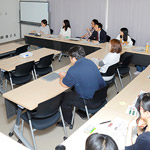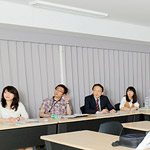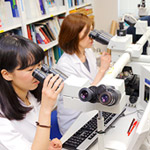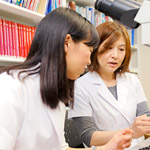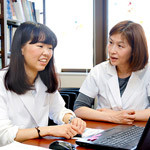
-
School of Medicine
-
Educational Content
-
Prospective Students
-
Current Students and Alumni
International Affairs

-
Graduate School of Medicine
-
Educational Content
-
Prospective Students
-
International Affairs

-
Graduate School of Biomedical Science and Engineering
-
Educational Content
-
Prospective Students
-
Other

-
Faculty of Medicine
-
Organizational Structure
-
Industry-academia Cooperative Projects

-
Overview
-
Entrance Examinations
-
Publications and Promotional Material
-
Various Types of Data
A day for Yui Okamori (Master's Program)
- HOME
- Graduate School of Medicine
- Master's Program
- A day for Yui Okamori (Master's Program)
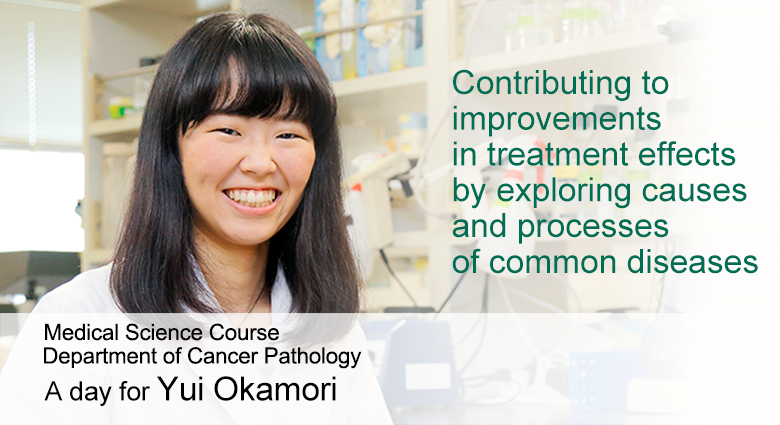
Click the image to enlarge it.

Arriving at school
I leave home in the suburbs of Sapporo, take the train to Sapporo station, and ride my bicycle waiting in the parking lots there to get to the university. At this time in the morning when the town is filled with fresh green smells, the main avenue up through the campus becomes busy with staff and students on their bikes.
When I was a senior high school student, I set my sight on becoming a medical technologist, and entered the Medical Technology Division of the Department of Health Sciences, the School of Medicine, Hokkaido University. From the start, I was interested in the pathology to determine causes and processes and also to diagnose symptoms of diseases, but I became most interested in cancer pathology when I started to learn pathology in my graduation study. My environment where specialists of various fields are working together made me want to go on to the graduate school.
At the lab
A week at the lab starts with the meeting Monday morning, here the 40 members of the department confirm the schedule of the week, particularly the special events.
At 9:30, we have an autopsy micro review. The pathologist in charge reports and discusses results of diagnoses with pathological tissue images made after autopsies.
Starting the experiments
On Monday I start experiments later than on other days when I directly go to the experiment lab. My study is about cervical cancer, a type of cancer where the incidence among women in the 20s and 30s is increasing. My objective is to improve the effect of treatments by determining the mechanisms of radioresistance, one of the therapies used to treat cervical cancer. I make use of the autopsy micro reviews I told about already by observing cell images microscopically.
To do my work, changing the medium of the cells at a clean bench is an essential part of the work to maintain the cells in good condition. Then at the experiment desk or table, I extract RNA from cervical cancer cells, measure the expression in the cells by what is called real-time PCR, and look at the results. I am usually engaged in gene analysis for three hours in the morning, and during this time I also review the paper and fill in my experiment notebook between experiments.
Lunch
At the seminar room
We have a seminar meeting on every Monday. Each of us take turns in introducing articles at the journal club to read and discuss the articles, and we also present our research at the research talk (part of the research meeting). Today, after the journal club, instructors who are scheduled to present at the 34th Annual Meeting of the Japan Society of Brain Tumor Pathology had a rehearsal. I learned it is necessary to acquire presentation skills as well as refining the contents of the research to be at the forefront of academic presentations.
With the instructors
After the seminar, I return to the experiments. My instructor, Mishie Tanino and I examine tissue images of patients with cervical cancer using a “juninkyo”, a microscope that makes it possible for ten people all to look at one image. I also study “basics for researchers”, including how to write research plans and creating presentations from Mishie Tanino.
I feel it worthwhile to study about common illnesses, the illnesses that may happen to me, in the graduate school. After completing the Master’s Program, I wish to work in and contribute to the drug discover field doing things that will lead directly to the treatment given to patients.
(Interviewed in May 2016)
Webpage of the Department of Cancer Pathology which this graduate school student belonged to




